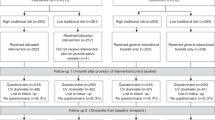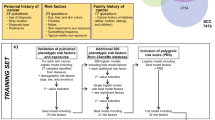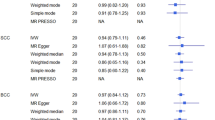Abstract
Surrogate reports by patients about their relatives, and vice versa, are potentially of great use in studies of the genetic and environmental causes of the familial aggregation of cancer. To assess the quality of such information in a family study of melanoma aetiology in Queensland, Australia, the authors compared surrogate reports with self-reports of standard melanoma risk factors obtained by mailed self-administered questionnaire. There was moderate agreement between surrogate reports provided by the cases and relatives' self-reports for questions on ability to tan (polychoric correlation coefficient (pc) = 0.60), skin colour (pc = 0.57), average propensity to burn (pc = 0.56), and hair colour at age 21 (kappa coefficient = 0.55), although relatives in the extreme risk factor categories were misclassified by surrogates at least half of the time. Agreement was lower for questions on degree of moliness (pc = 0.45), tendency to acute sunburn (pc = 0.42), and number of episodes of painful sunburn (pc = 0.23). The quality of relatives' surrogate reports about cases was similar to that of cases' surrogate reports about relatives. Cases who reported a family history of melanoma provided better surrogate information than did cases who indicated no family history, and female cases provided better surrogate reports than did males. Cases were better able to report for their parents and children than for their siblings. The authors conclude that when the use of surrogate reports of melanoma risk factors is unavoidable, results should be interpreted cautiously in the light of potentially high rates of misclassification. In particular, surrogate reports appear to be a comparatively poor measure of self-assessment of number of moles, the strongest known phenotypic indicator of melanoma risk, and may bias comparisons between families with and without a history of melanoma.
This is a preview of subscription content, access via your institution
Access options
Subscribe to this journal
Receive 24 print issues and online access
$259.00 per year
only $10.79 per issue
Buy this article
- Purchase on Springer Link
- Instant access to full article PDF
Prices may be subject to local taxes which are calculated during checkout
Similar content being viewed by others
Author information
Authors and Affiliations
Rights and permissions
About this article
Cite this article
Aitken, J., Green, A., MacLennan, R. et al. Comparability of surrogate and self-reported information on melanoma risk factors. Br J Cancer 67, 1036–1041 (1993). https://doi.org/10.1038/bjc.1993.190
Issue Date:
DOI: https://doi.org/10.1038/bjc.1993.190
This article is cited by
-
Early-life sun exposure and risk of melanoma before age 40 years
Cancer Causes & Control (2011)
-
Cancer Family History Reporting: Impact of Method and Psychosocial Factors
Journal of Genetic Counseling (2007)



